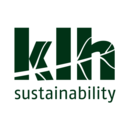Are sustainable urban drainage systems the response to our changing climate?
The cost to insurers of the floods in early 2014 is expected to be more than £1bn. In light of this, it is worth exploring again the benefits of Sustainable Urban Drainage systems (SuDS).
Unlike conventional drainage systems, SuDS replicate the natural movement of water by slowing surface water run-off and contributing to the replenishment of the water table. During extreme rain events, SuDS help to attenuate runoff volume by capturing and storing excess water. This can be achieved through a range of techniques, such as; porous paving, green roofs, open conveyance systems and area intensive ponds.
These systems help to control the peak flow of run-off. Some SuDS will also reduce the total volume entering surface water or combined sewers through natural processes such as evaporation or transpiration and, depending on ground conditions, infiltration. Contaminated and impermeable ground conditions such as clay are not generally suited to infiltration SuDs but this does not mean SuDS should not be explored as part of an integrated drainage system. It may not be desirable or even technically viable to allow infiltration from open conveyance techniques such as swales and French drains, but they will still help to reduce the total volume of rainfall entering the surface water network through evaporation and transpiration.
There are numerous other benefits that different types of SuDS offer, including improvement in the quality of water run-off:
- In a non-vegetated SuDS, bacteria that breakdown hydrocarbons thrive, making porous paving an ideal solution for car parks.
- Open planted SuDS offer great benefits in term of biodiversity.
- Green roofs provide valuable habitat in urban areas.
- Vegetated swales on roadside verges can provide useful corridors for amphibians, reptiles and other animals.
- SuDS in an urban environment are striking features which offer amenity to the public and help create a sense of community.
Retrofitting our urban areas with SuDS is a considerable challenge and one that has led to the promotion of the Thames Tideway Tunnel as the solution to poor water quality in the Thames. The Thames Tideway Tunnel will collect and attenuate the combined sewer overflows rather than segregating surface water from sewerage at source or reducing the volume of surface water entering combined sewers through SuDS. The solution is understandable; there is little space for verges in inner-city London. Retrofitting green roofs across buildings would involve a mammoth task, engaging with property maintenance companies and undertaking structural surveys to ensure the weight of a green roof could be supported. Digging up London’s roads to lay segregated surface water drainage systems would cause chaos for the city's commuters and businesses.
That is not to say that these options should not be explored in conjunction with London’s new ‘super-sewer’. Sustainable development by its very nature requires an integrated and holistic approach to our resource challenges. There is no magic bullet, or a ‘one-size’ fits all technology, we require an intelligent debate between multiple stakeholders to determine who can contribute what and how this will affect water catchment areas as a whole.
Despite the numerous benefits offered by SuDS, the uptake has been slow, largely due to the lack of willingness to adopt by authorities. Hopefully the upcoming enforcement of Schedule 3 of the Flood and Water Management Act 2010 anticipated to take place in April 2014 will reverse the tendency to select traditional drainage solutions over intelligently engineered sustainable solutions. Schedule 3 stipulates that all new developments and redevelopments must have their drainage strategies approved by a SuDS Approving Body (SAB) before construction can commence. The SAB will ensure surface runoff is managed at its source in line with the National Standards and will remove the automatic right for developers to connect to a public sewer network. For this to be effective however, it is crucial that the SAB is populated with engineers, ecologists, hydrologists and other technical professionals.
This article was created by Chloe Souque of --KLH Sustainability as part of an ongoing series of posts for Designing Buildings Wiki.
[edit] Related articles on Designing Buildings Wiki
Featured articles and news
Latest Build UK Building Safety Regime explainer published
Key elements in one short, now updated document.
UKGBC launch the UK Climate Resilience Roadmap
First guidance of its kind on direct climate impacts for the built environment and how it can adapt.
CLC Health, Safety and Wellbeing Strategy 2025
Launched by the Minister for Industry to look at fatalities on site, improving mental health and other issues.
One of the most impressive Victorian architects. Book review.
Common Assessment Standard now with building safety
New CAS update now includes mandatory building safety questions.
RTPI leader to become new CIOB Chief Executive Officer
Dr Victoria Hills MRTPI, FICE to take over after Caroline Gumble’s departure.
Social and affordable housing, a long term plan for delivery
The “Delivering a Decade of Renewal for Social and Affordable Housing” strategy sets out future path.
A change to adoptive architecture
Effects of global weather warming on architectural detailing, material choice and human interaction.
The proposed publicly owned and backed subsidiary of Homes England, to facilitate new homes.
How big is the problem and what can we do to mitigate the effects?
Overheating guidance and tools for building designers
A number of cool guides to help with the heat.
The UK's Modern Industrial Strategy: A 10 year plan
Previous consultation criticism, current key elements and general support with some persisting reservations.
Building Safety Regulator reforms
New roles, new staff and a new fast track service pave the way for a single construction regulator.
Architectural Technologist CPDs and Communications
CIAT CPD… and how you can do it!
Cooling centres and cool spaces
Managing extreme heat in cities by directing the public to places for heat stress relief and water sources.
Winter gardens: A brief history and warm variations
Extending the season with glass in different forms and terms.
Restoring Great Yarmouth's Winter Gardens
Transforming one of the least sustainable constructions imaginable.























